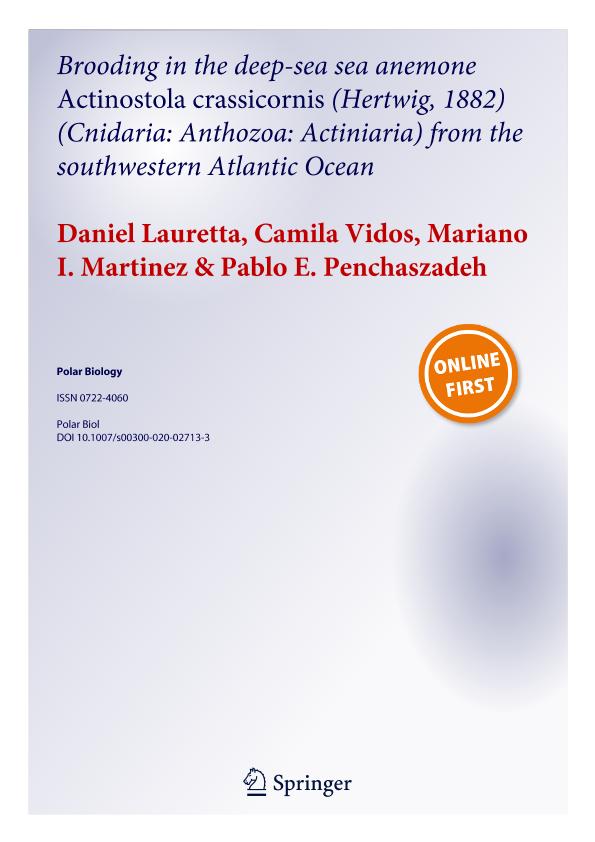Artículo
Brooding in the deep-sea sea anemone Actinostola crassicornis (Hertwig, 1882) (Cnidaria: Anthozoa: Actiniaria) from the southwestern Atlantic Ocean
Fecha de publicación:
09/2020
Editorial:
Springer
Revista:
Polar Biology
ISSN:
0722-4060
Idioma:
Inglés
Tipo de recurso:
Artículo publicado
Clasificación temática:
Resumen
Marine invertebrates can display several reproductive strategies, from external reproduction to parental care. Internal brooding is particularly relevant in harsh conditions, like Antarctic/sub-Antarctic waters and deep-sea, since it maximizes the survival of the young. Actinostola crassicornis is an abundant and widely distributed sea anemone from the southwestern Atlantic Ocean. It can be found all along the Argentinean sea down to 1200 m depth, usually in large numbers. It is a unique species in the area, since it is a large white brooding sea anemone. We studied 75 specimens collected by the O/V Walther Herwig and the O/V Puerto Deseado all along its distribution, from about 60 m to 800 m depth, in different seasons of the year. All the specimens were sexed, and the presence of free oocytes and juveniles inside the coelenteron were assessed. Large oocytes (over 500 μm) and juveniles were found in samples from most of the sampled months. We found a larger number of female specimens, and most of the brooding specimens were female. No early developmental stages were found smaller than a sea anemone with about 12 tentacles. We conclude that A. crassicornis reproduces continuously throughout the year and that although most of the juveniles were found in females, male specimens can breed. Brooding has great benefits in terms of protecting the offspring, since predation upon the juveniles is prevented, but dispersal of the offspring is low, shown by the aggregated distribution of the species.
Palabras clave:
ACTINOSTOLIDAE
,
ARGENTINA
,
REPRODUCTION
,
SUB-ANTARCTIC WATERS
Archivos asociados
Licencia
Identificadores
Colecciones
Articulos(MACNBR)
Articulos de MUSEO ARG.DE CS.NAT "BERNARDINO RIVADAVIA"
Articulos de MUSEO ARG.DE CS.NAT "BERNARDINO RIVADAVIA"
Citación
Lauretta, Daniel Marcelo; Vidos, Camila; Martinez, Mariano Ignacio; Penchaszadeh, Pablo Enrique; Brooding in the deep-sea sea anemone Actinostola crassicornis (Hertwig, 1882) (Cnidaria: Anthozoa: Actiniaria) from the southwestern Atlantic Ocean; Springer; Polar Biology; 43; 9; 9-2020; 1353-1361
Compartir
Altmétricas




